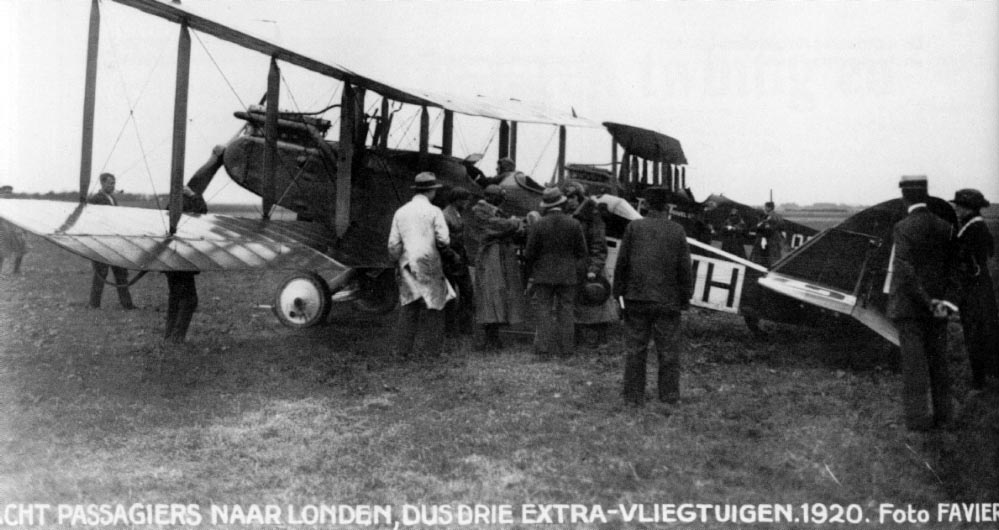
1920>

Fokker returns
The "N.V. Nederlandsche Vliegtuigfabriek" was founded in Amsterdam in the 'old' buildings from the ELTA.
Fokker had worked for Germany in World War I, designing more then 40 different types of aircrafts, and crossed the Dutch border with six trains with equipment and all the money he had earned.
The first Fokker the KLM used in 1920 was the F II. It was the very first passengeraircraft where the passengers travelled in a seperat cabin.
KLM services to London and Hamburg
On 17 May 1920, a De Havilland DH-16 (Airco) registrated G-EALU out of London landed at Schiphol airport.
It had two passengers on board, O’Brien and Rhodes, both journalists. |
|
"with the opening of the first regular airservice between England and Holland, I send you greetings from London to the city of Amsterdam. I wish that this service will contribute to the friendly en business relationship between the two cities and our countries." I have great confidence in the well-meaning cooperation between the Dutch and English companies in relation to this new and very important airtransport." |
Flying was a real adventure
The next day Shaw flew back to London, now with a letter from the Amsterdam Mayor for his London collegae. The plane and its crew had been contracted from the English company Aircraft Transport and Travel. In those early days, flying was a real adventure. Passengers were seated in the open cockpit of a plane that flew at an altitude of about 300 metres, where turbulence is not uncommon. The pilots had a fairly reliable navigation system: they simply kept an eye on church steeples, railroad tracks and other topographical features. These early flights attracted few passengers, and the Management Board therefore advised Plesman to advertise more regularly. In july 1920, an airmail service was started between Amsterdam and London. As was the case with previous flights, this service began on a trial basis. In september 1920 services were started at four places in three countries, KLM had 12 employees. Fleat excisted of two DH-9 and two Fokker F II aircrafts. The Fokker FII was brand new and a sensation, |
|
because the aircraft was considered save and luxurous. It could carry two pilots and four passengers KLM teporarily closed down its route network on 31 October 1920. The airline was convinced winter would cause so many problems, that it would be impossible to fly on schedule. KLM therfore decided to suspend flights until the spring of 1921. |
![]()













